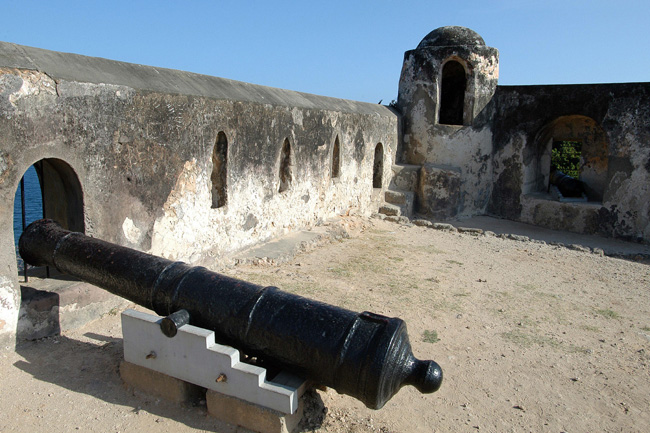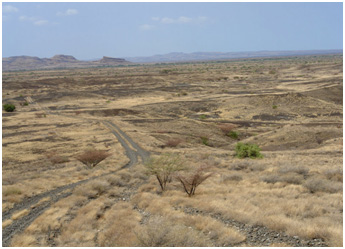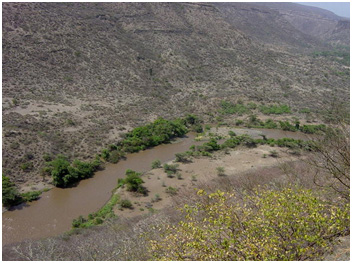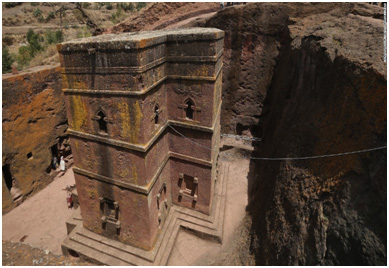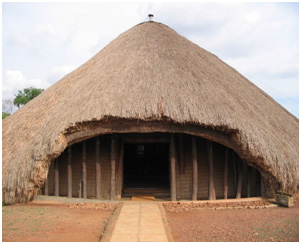The World Heritage List consists of sites forming part of the cultural and natural heritage considered to be of outstanding universal value to mankind. To qualify, the sites must meet at least one of ten set criteria by UNESCO. As illustrated in this excerpt by Jovago.com, sites may come in form of mountains e.g. Simien Mountains, unique valleys, medieval art and infrastructure etc. Here is a list of East Africa’s World Heritage Sites that stand as great evidence of both man’s evolution and his civilization in architecture and trade.
Sibiloi National Park – Kenya
Located in the northeastern part of Lake Turkana, Sibiloi covers about 1570km of importantpaleontological spots which has been very instrumental in supporting the Darwin theory of evolution. Discoveries include both human and pre-human fossils and hominids dating up to 2 million years ago. The area has distinctive flora and fauna; a seemingly extraterrestrial landscape devoid of life. The lake’s waters are said to be the most saline in East Africa thus supporting very unique habitat. Tourists can take short camping visits for excursions or consider hotels for their stay. There is a museum and a research center not too far away.
The Lower Valley of the Awash -Ethiopia
The location is most popular for the discovery of most famous Australopithecus afarensis – “Lucy”, the most complete humanoid who set a whole new perspective for both historians and paleontologists. Although the remains of Lucy, believed to have walked the earth more than 3.2 years ago have been fossilized and a replica of the same displayed for view in the national Museum of Addis Ababa, the site continues to attract more research and excavation. The area also lies in the Afar triangle which is also popular for the Danakil Depression – recorded as the hottest and most cruel location on earth.
Rock-Hewn Churches of Lalibela – Ethiopia
The rock-hewn churches of Lalibela were constructed in the 13th century by the Christians as their new pilgrimage center and holy land. The most fascinating bit of these eleven medieval features is that, in contrast to modern day architecture, they were drilled on giant rock caves from the rooftop going down to the foundation. The churches still hold their religious sanctity to date, and form a globally recognized pilgrimage convergence spot for the orthodox Christian.
Fort Jesus in Mombasa- Kenya
Fort Jesus is one of the most outstanding and excellently preserved ancient landmarks that marked the Portuguese conquer and control of the East African port town of Mombasa. The Fort takes a blur shape of a man lying down while facing the ocean. Inside the fort are segmented cannons consisting of antiques by three of its rulers; Portuguese, British and the Arab.
SongoMnara in Tanzania
This site is dominated by the well preserved remains of mosques, tombs and the housing blocks that used to facilitate off shore trade in the 15th Century.The convergence point created a favorable market ground for traders originating from the Persian Gulf, The Red Sea and Western India.Due to its short period of occupation, SongoMnara is still very well preserved and has provided a rich ground for studies on the Swahili town occupancy and lifestyle.
Kasubi Tombs, Uganda
Located in the Ugandan capital of Kampala, Kasubi is the official burial site of the Kabaka Rulers-now the rest place for the last four Kabakas of Buganda Kingdom. The site is therefore held in esteem as a hallowed ground for religious activities and spiritual rituals. Kasubi was enlisted on UNESCO World Heritage Sites in 2001.

